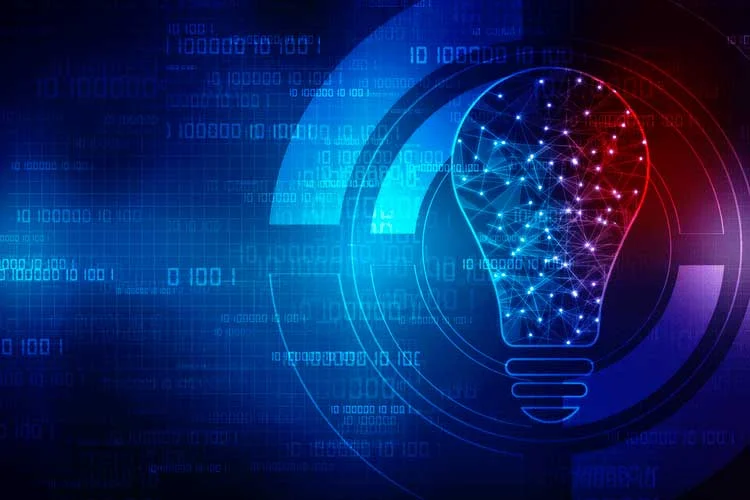It delivers quick time-to-value while verifying that your observability technique can sustain with the dynamic complexity of present and future environments. Learn the means to speed up your app modernization, enhance developer productivity, and enhance operational effectivity and standardization. While public cloud is a crucial a part of any modernization strategy, non-public cloud, hybrid cloud and multicloud methods are also critically essential for security, latency and architectural causes.
- Transitioning to new platforms requires retraining staff or hiring new expertise with the mandatory skills.
- Because all of an application’s elements ship together, it is tough and dear to add options given the overhead of complexity and integration challenges.
- This leaves legacy techniques uncovered to new threats and non-compliant with current safety standards.
- As legacy data is commonly dispersed throughout multiple databases, it additionally requires vital effort to reorganize and migrate.
- The forecast is that about 78% of customized functions shall be modernized within a year, with most companies aiming for enhanced security and effectivity.
Modernizing legacy purposes help get rid of the problems that arise from utilizing outdated tools, sending a ripple effect throughout your whole digital workplace. Teams become more efficient, workers and customers have higher experiences, and prices and dangers are lowered. While preserving enterprise aims first, any modernization project additionally focuses on making the lives of their users simpler.
Understanding Legacy Applications
In some circumstances, IT leaders could decide that an software is no longer essential and ought to be retired. This would contain disposing of software program responsibly and stopping its renewal cycle. With this option, an application is moved to the basic public cloud, but it’s first overhauled to make it more like a cloud-native app, often via containerization. Legacy techniques usually have outdated features and limited integration capabilities. Even Microsoft has recognized that it’s time to maneuver away from desktop-only software, proving that the Cloud and the SaaS mannequin are right here to stay. Upgrade and use the most recent versions of Crystal Reports with DataFlex functions.
That’s because cloud-based software and infrastructure are cheap, flexible, and scalable. While switching systems is a big funding of time and assets, pouring extra into software that is misplaced its edge means you are at an enormous disadvantage. While this is resource-intensive, it allows for full customization and optimization to satisfy present business needs. Containerization enables an software to be packaged in constant, light-weight methods so that they can run persistently across desktop, cloud, or on-premises environments.
Legacy techniques are sometimes maintained by employees with specialised data of outdated applied sciences. Transitioning to new platforms requires retraining workers or hiring new expertise with the required abilities. Investing in coaching applications and collaborating with skilled consultants can help handle these talent gaps effectively. Application modernization transforms outdated software program to match new computing applied sciences. It typically entails updating the codebase with newer languages, adopting efficient frameworks, and getting older software migrating from on-premise servers to cloud-based infrastructures.
Application Modernization Technique – 5 Key Methods
Techniques like static and dynamic evaluation of code, system conduct profiling, and dependency mapping help in understanding the system’s intricacies. Additionally, assessing technical debt and legacy data structures becomes pivotal in devising a sturdy modernization technique. As companies try for heightened efficiency, scalability, and flexibility, the crucial to modernize these legacy functions turns https://www.globalcloudteam.com/legacy-application-modernization-a-digital-transformation-process/ into more and more pronounced. In this comprehensive guide, we delve into the intricacies of legacy utility modernization, exploring its significance, pivotal steps, challenges, and methods for a profitable transformation. Legacy system modernization is the method of upgrading or reworking outdated, typically monolithic and inefficient legacy systems into more up to date, efficient and adaptable options.

This sort of flexibility is a real profit to organizations charting their path ahead within the cloud. If even one component of an app is facing load and performance challenges, it could possibly become essential to scale up the complete app solely to serve the most-demanding single part. Muhammad Raza is a Stockholm-based technology marketing consultant working with leading startups and Fortune 500 corporations on thought management branding initiatives throughout DevOps, Cloud, Security and IoT. In many circumstances, new building may be incorporated inside a bigger modernization project. Just like some other product available within the market, each application and software has a lifecycle. If it’s too hard to salvage old software program, teams could opt to exchange it entirely with new, industrial off-the-shelf products or a Software as a Service option.
There’s a broad portfolio of applied sciences that can facilitate the modernization processes most organizations are going via. Because all of an application’s components ship collectively, it is troublesome and costly to add features given the overhead of complexity and integration challenges. By using this simple 2×2 matrix, organizations can consider how properly present and new applied sciences can carry out in terms of enterprise match, performance, structure, and adoption. Having old software program supporting enterprise operations usually means increasing your danger, growing your costs, and severely reducing your small business agility. Prior to deciding the best route for your modernization project, you first need to understand the pros and cons, with a transparent picture about present status and future targets. Modernized functions can have higher data management capabilities, permitting organizations to make better choices and achieve deeper insights into their enterprise.
Step 3 Consider Modernization
Technical debt is a metaphor in software development that refers back to the penalties of choosing a quick solution to an issue instead of a extra comprehensive and accountable approach. Like financial debt, it represents a trade-off between short-term features and long-term costs. Modernized purposes are sometimes more agile and versatile, allowing development teams to respond shortly to changing market situations and buyer wants. Many security measurements exist in legacy purposes that should be monitored and updated to find a way to keep up with the latest cyber risk. However, failing to have a strong safety plan in place to safe your organization and its knowledge may find yourself in a cyber-attack, causing you to lose clients and important information.

IBM Instana’s fully automated real-time observability platform places efficiency information in context to deliver fast identification to help stop and remediate issues. Instana goes beyond conventional APM solutions by democratizing observability so anybody throughout DevOps, SRE, platform engineering, ITOps and growth can get the data they want with the context they want. Modernization journeys will range group to organization, but there are a couple of very common features that many modernization efforts should address. Whether you comply with a prescribed strategy or are DIYing it, these greatest practices ring true for any modernization effort. Once you’ve identified and collected data on a selection of candidate legacy technologies, it’s time to prioritize. This sensible guide will walk you through the Java app modernization journey with Red Hat.
Microservices
This approach can present immediate cost savings and performance improvements by leveraging fashionable infrastructure. However, it could not tackle underlying issues with the application’s structure or design. When is the best time to approach legacy software modernization and how can businesses mitigate dangers associated to main system-level changes?
It sometimes includes transitioning from older programming languages, frameworks, and infrastructures to more superior, environment friendly, and secure technologies. Let’s explore all about legacy app modernization, including the process and main causes to modernize your legacy systems. Ensuring new methods are appropriate with present processes and instruments is important for seamless integration. Legacy techniques often use outdated applied sciences that gained’t work properly with modern platforms. This can lead to compatibility points, requiring extra time and resources to resolve. Conducting thorough compatibility assessments and utilizing middleware options might help bridge the gap between old and new methods.
Legacy Utility Modernization: The Entire Information
So what can SMBs do to modernize their legacy systems and their businesses within the process? Read on to study every little thing you should learn about legacy application modernization. The challenges with application modernization usually boil down to price and complexity.

Modernization addresses vulnerabilities present in legacy systems, protecting delicate knowledge and guaranteeing compliance with the newest safety requirements. Choose a modernization technique that offers fast value delivery and fits your unique requirements. However, for specialized wants or to add bespoke options, custom software program improvement could be extra acceptable. This comprehensive assessment will give you a clear image of the state of your legacy techniques, serving to you prioritize actions for modernization. Modern tech workers depend on sources like libraries, frameworks, and tools available in online communities, which are scarce for legacy techniques. Replacing the legacy utility with a brand new, off-the-shelf solution could be the most straightforward strategy.
We’ve collected the answers to these questions, spiced them up with a handful of practitioners’ recommendations on eliminating legacy wisely, and invite you to check them out further in this article. Today greater than ever earlier than, legacy software modernization claims a significant chunk of A-list companies’ IT budgets and seems on top of the CIO’s agenda. For enterprises however, modernization is not only about efficiency—it’s about preserving an excellent brand popularity and providing users with a strong competitive advantage. Legacy utility modernization is the process of updating and transforming outdated software techniques.
Best Practices Of Enterprise Software Modernization
The variety of platforms linked and the complexity of IT landscape parts (cloud, hybrid, and on-premise knowledge centers) has increased. In business phrases, agile “plugin” integrability is becoming a aggressive benefit that helps in straightforward integration with devices and multiple applications. According to market research by Vanson Bourne, application modernization can lead to a 13% discount in operational prices and a possible increase in a yearly income of greater than 14%.
Like any digital project, legacy utility modernization requires to begin with growing a thorough technical strategy tailor-made to specific enterprise requirements and modernization context. We supply cost-efficient software modernization solutions for all organizations, from SMBs to enterprises. You can rely on our experience and technical proficiency to make the transition seamless and profitable.
Overall, it may be very important update legacy purposes to make sure business growth and to maintain pace with the ever-changing business landscape. In follow, it’s the transitioning from present and/or traditional software program functionalities to a context that is compliant with up-to-date IT landscape potential. The most evident instance is moving an enterprise IT surroundings from a traditional on-premises data heart model powered by mainframes to a cloud surroundings rich with microservices and containers. Modernizing applications can help to scale back technical debt, liberating up resources and bettering the general health of the IT infrastructure.
In fact, tech leaders are prioritizing legacy application modernization, with world spending anticipated to achieve $3.4 trillion in 2026. Explore how IBM’s utility supply solutions assist construct new cloud-native purposes and modernize existing apps. IBM Cloud Pak for Applications (CP4Apps) empowers your groups to ship an software landscape that transforms with your business. Whether it is deployments, constructing new cloud-native functions, refactoring or re-platforming existing functions; CP4Apps has it covered.
Leave a Reply